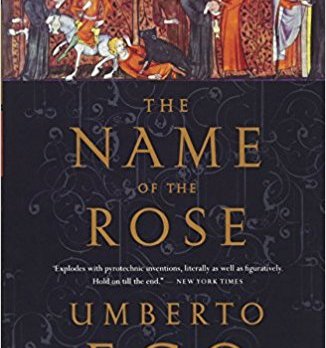Lenten Campaign 2025
This content is free of charge, as are all our articles.
Support us with a donation that is tax-deductible and enable us to continue to reach millions of readers.
From Variety:
John Turturro will play William of Baskerville, the 14th century Franciscan who investigates a series of grisly murders in the high-end TV adaptation of Umberto Eco’s bestseller “The Name of The Rose,” set to start shooting in January at Rome’s Cinecittà Studios. Rupert Everett has been cast as the monk’s antagonist, Inquisitor Bernard Gui. Rising young German actor Damien Hardung (“The Red Band Society”) has landed a key role as Benedictine novice Adso of Melk, William of Baskerville’s apprentice sleuth.
Some may remember the less-than-memorable movie version of Eco’s blockbuster from 1986, starring Sean Connery, Christian Slater and F. Murray Abraham (hot off his Oscar win for “Amadeus”). Wikipedia notes:
The film did poorly at the box office in the United States, playing at only 176 theatres and grossing only $7.2 million in return on a $17 million budget. However, it was popular in many parts of Europe and had a worldwide gross of over $77 million. It received generally positive reviews from American and Italian critics, with review aggregator Rotten Tomatoes giving it a 73% approval rating.Roger Ebert gave the film 2.5 stars out of a possible 4, writing, “What we have here is the setup for a wonderful movie. What we get is a very confused story […] It’s all inspiration and no discipline.” In 2011, Eco was quoted as giving a mixed review for the adaptation of his novel: “A book like this is a club sandwich, with turkey, salami, tomato, cheese, lettuce. And the movie is obliged to choose only the lettuce or the cheese, eliminating everything else – the theological side, the political side. It’s a nice movie.”
You can get a flavor of the original movie in the trailer below.
The source material, though, was hugely popular, with an intricate and challenging plot:
Franciscan friarWilliam of Baskerville and Adso of Melk, a Benedictine novice travelling under his protection, arrive at a Benedictine monastery in Northern Italy to attend a theological disputation. Upon their coming, the monastery is disturbed by a suicide. As the story unfolds, several other monks die under mysterious circumstances. William is tasked by the monastery’s abbot to investigate the deaths, and fresh clues with each murder victim lead William to dead ends and new clues. The protagonists explore a labyrinthine medieval library, discuss the subversive power of laughter, and come face to face with the Inquisition, a path that William had previously forsworn. William’s innate curiosity and highly developed powers of logic and deduction provide the keys to unraveling the abbey’s mysteries.
It should be interesting to see how this new iteration turns out—and what it has to say about faith and reason.

